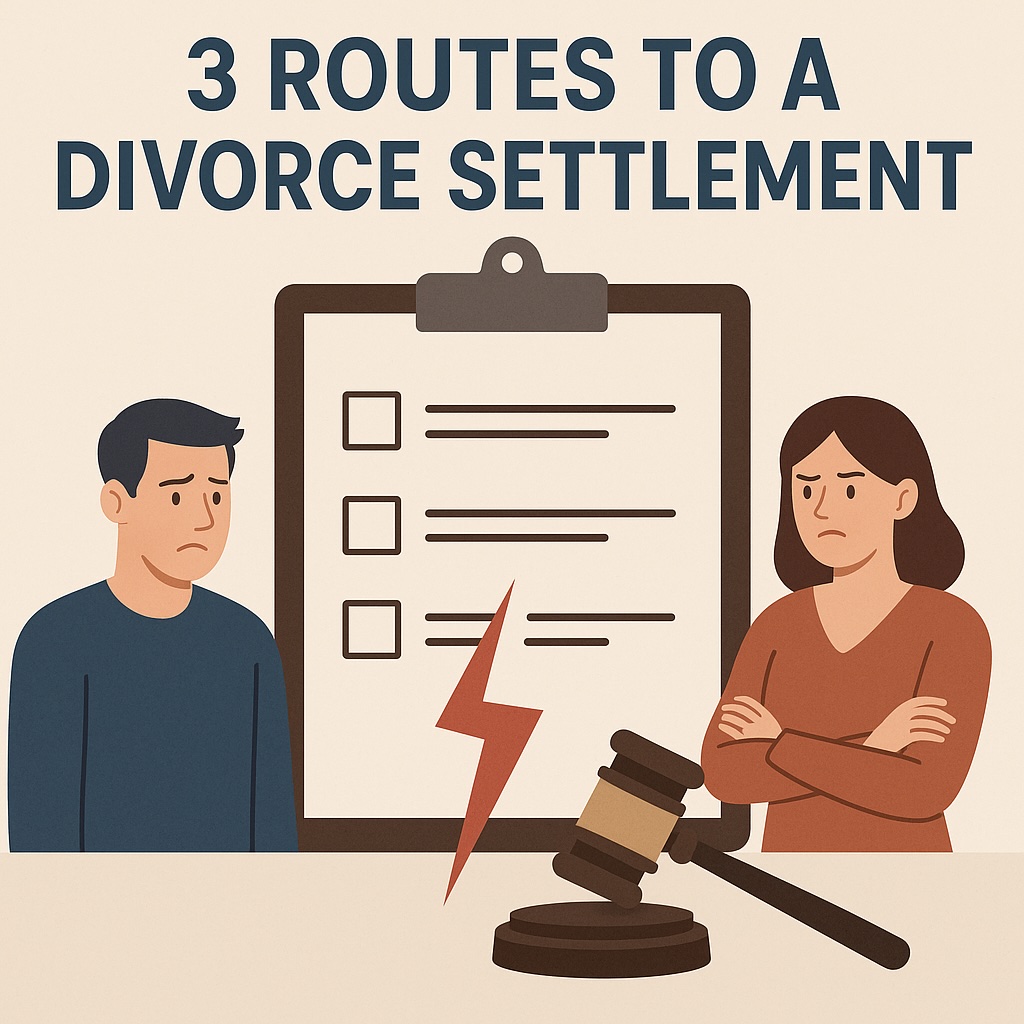This is said by every spouse who is divorcing.
As relationships dissolve, spouses face the daunting task of reaching a divorce settlement.
Amidst the emotional turmoil, it’s essential to consider the most effective methods to achieve a divorce settlement.
Here’s a review of the 3 most common routes to reach a divorce settlement:
- The worse, longest and most expensive option: Divorce Litigation
Divorce litigation is the most familiar form of dispute resolution. It involves one spouse suing the other spouse by filing public documents criticizing one another as the opening step. Then they wind through years of court hearings. Eventually, each spouse will present their case before a judge who has no past knowledge or familiarity with the spouses. Litigation proceedings are public, with all information remaining in the public domain forever and for anyone to read. While lawyers and judges play a significant role, litigation usually ends in the spouses agreeing to a settlement before trial. Despite its adversarial nature, litigation provides a structured process for resolving disputes, but it can be unpredictable, time-consuming and expensive.
2. The least costly and fastest form of dispute resolution, although non-binding is Divorce Mediation.
Both spouses must agree to divert their issues to a private divorce mediator. Mediation is voluntary, collaborative and neutral. The mediator does not impose a solution, but rather he assists spouses in understanding each other’s perspectives and interests. By fostering open communication, mediation allows spouses to vent their feelings, safely express their interests and explore settlement options. Whether working together or separately in private sessions, mediators help spouses reach a resolution. The problem with mediation is that, in cases where a settlement is not reached, the spouses must start litigation or arbitration afresh without being able to use the past work product from mediation or the mediator to reach closure.
3. By far, the smartest, most efficient and complete process is Divorce Mediation/Arbitration.
In mediation/arbitration, a divorce expert acts as a case-manager, process designer, neutral evaluator, referee, mediator and judge, all rolled into one. The mediator/arbitrator will ensure that there will be an end to the case – either by settlement or award. The mediation stage is the same as described above. If the spouses cannot reach a settlement in mediation, in mediation/arbitration, then each spouse presents evidence at an arbitration hearing, and the arbitrator renders a binding decision, just like in litigation. Unlike divorce court, arbitration allows spouses to curate the process including the dates of the hearing (daytimes, evenings and weekends), the method of the hearing (live or by Zoom), the testimony of witnesses (live, by Zoom or by affidavit) and the standards of evidence (witnesses, expert reports, business records, witness statements). Arbitration decisions are typically confidential and appeals can be limited, making it a faster and less costly alternative to litigation.
Choosing the right method depends on various factors, including the complexity of the legal issues, the level of conflict, and the desire for confidentiality. Mediation offers a cooperative approach, ideal for amicable divorces where the spouses are willing to communicate and compromise. Litigation, although typically more adversarial, may be necessary in rare cases involving power imbalances, family violence, coercive control or complex legal issues. Mediation/arbitration provides a middle ground – combining elements of mediation and litigation while offering flexibility and confidentiality.
Ultimately, the key to a successful divorce settlement lies in selecting the appropriate dispute resolution method that aligns with the needs and circumstances of both spouses. Whether through mediation, arbitration or litigation, the goal remains the same – to reach a fair and equitable resolution while minimizing emotional and financial strain.
Share this article on:
